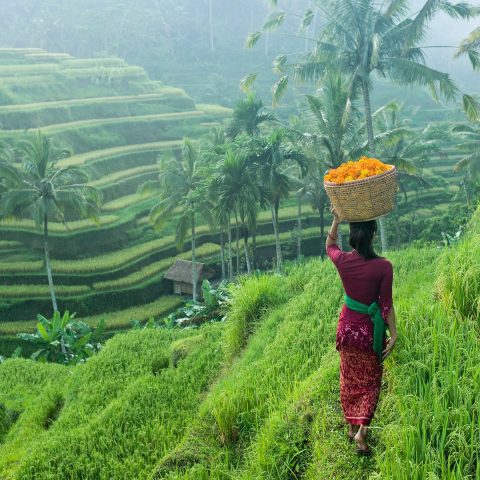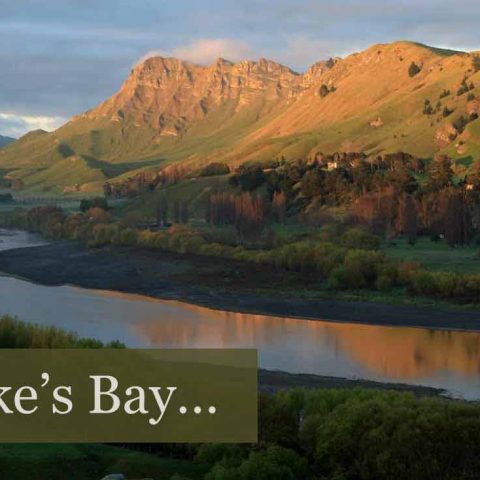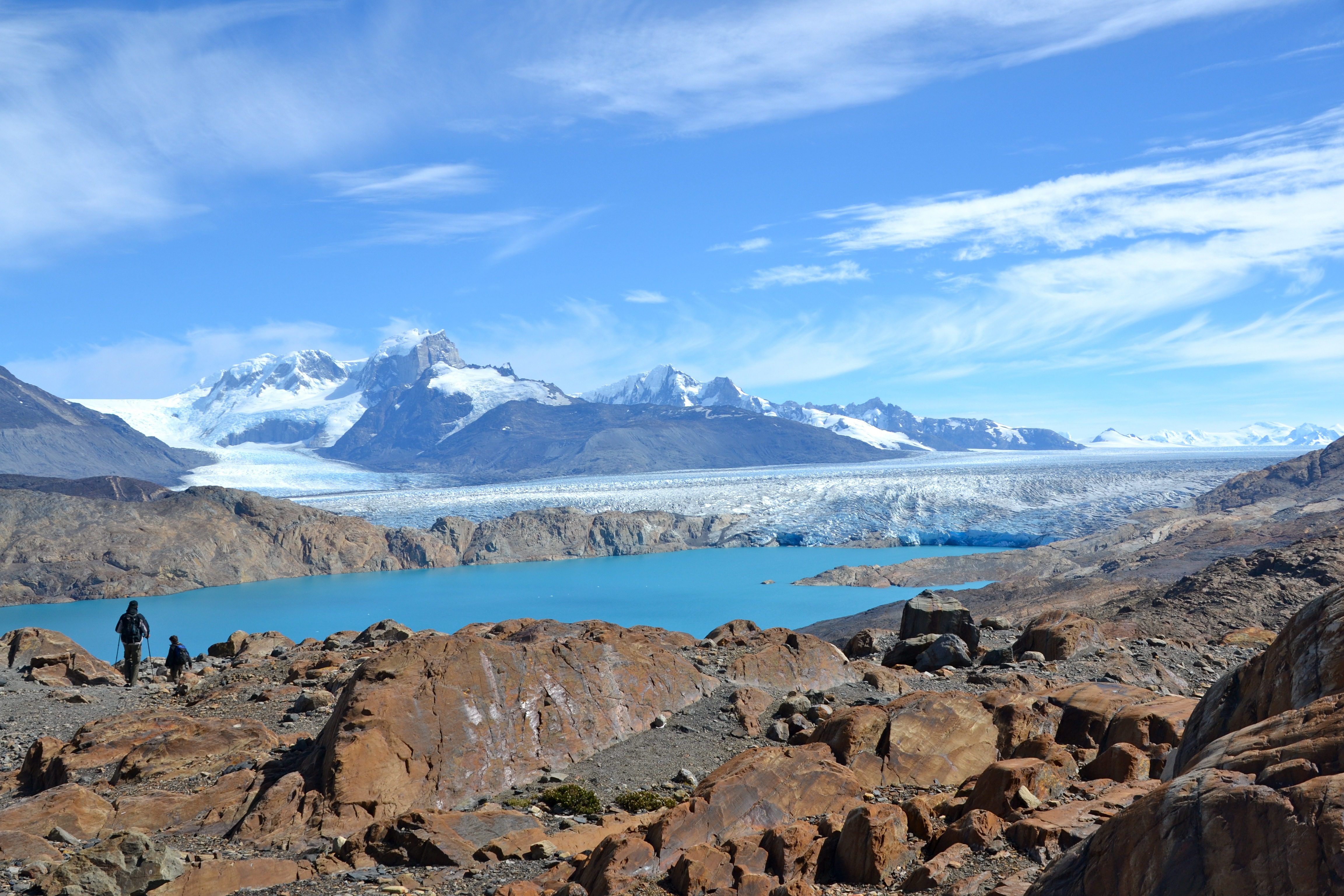
Hiking in Southern Patagonia
The moment my husband and I arrive in El Calafate, an oasis town in Southern Patagonia’s desert, we know that our decision to travel to Argentina’s outback wilderness was right. It is exotic and exciting. Birds dig their webbed feet into the sand to keep from being blown away. Clouds swirl past the snow-capped Andean peaks. We came to explore remote hiking trails, gawk at wind-hewn icebergs, and walk on Perito Moreno—one of the southern hemisphere’s few advancing glaciers.
“That’s Cristina’s place,” announces our driver. He points to sprawling bungalows and an enormous villa. They are surprisingly lavish in this frontier town of slapdash clapboard buildings with corrugated metal roofs.
“Who’s she?” I ask, sounding quite ignorant, I later realize.
“The President. She vacations here. Owns the hotel.” Los Sauces belongs to Argentina’s first elected female leader, the glamorous and tough Cristina Fernández de Kirchner. I hadn’t realized that our accommodations and her private home would be so close together, sharing an elegant décor of British hunting lodge-meets-hearty ranch. The property originally belonged to her late husband and political predecessor, Néstor. The goal to transform the remote location into a premier travel destination is ongoing. Progressing from a one-runway airport to a four-terminal stop opened in 2012, all signs point to their success.
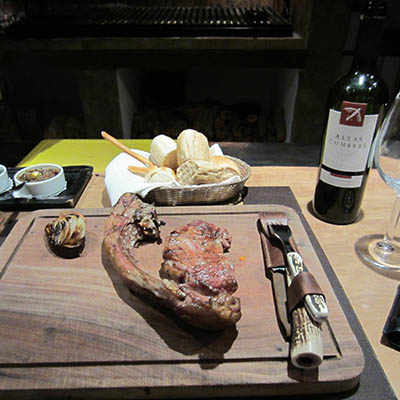 After checking in, we bundle up for the trek to the hotel bar. Sand hits our faces like shards of glass. There’s an eerie quiet. We are aware of thethings that are missing more than what is there: an absence of city lights and neon signs leaves us in unfamiliar darkness. Because we are traveling off-season, the staff has time to chat while plying us with drinks. Chef Carlos whips up a parilla that includes a lamb chop the size of a rib steak and a steak resembling an entire side of cow. Excited by my limited Spanish, he rambles on about the region’s world-class cattle culture. In Argentina, animals roam great expanses of open land, chewing thick grasses and grey-leaved desert thorns. It takes six years—compared to one year in North America—to bring the meat to market. We savour the results—a reduced-fat beef with melt-in-the mouth tenderness.
After checking in, we bundle up for the trek to the hotel bar. Sand hits our faces like shards of glass. There’s an eerie quiet. We are aware of thethings that are missing more than what is there: an absence of city lights and neon signs leaves us in unfamiliar darkness. Because we are traveling off-season, the staff has time to chat while plying us with drinks. Chef Carlos whips up a parilla that includes a lamb chop the size of a rib steak and a steak resembling an entire side of cow. Excited by my limited Spanish, he rambles on about the region’s world-class cattle culture. In Argentina, animals roam great expanses of open land, chewing thick grasses and grey-leaved desert thorns. It takes six years—compared to one year in North America—to bring the meat to market. We savour the results—a reduced-fat beef with melt-in-the mouth tenderness.
In the morning, we’re ready for our first excursion. Our journey to the hard-to-reach glaciers begins each day as bits of dawn poke through the night sky. Long bus and boat rides are du rigueur in this remote land. We board the touristy Estancia Cristina (the only way to get to our destination) and glide between iridescent icebergs floating regally on the waters of Lago Agrigento. From the outer deck of the government-controlled concession we get our first glimpse of Upsala, a massive 37-kilometre frozen wonder. Cold winds sweep off the ice fields, stinging our cheeks. As the boat swings around, Los Glacieres National Park’s largest glacier comes clearly into focus. A panorama of white, grey and shimmering blue, draped like a tablecloth over the turquoise waters, is protected on either side by sentinels of icy peaks. Disembarking at Onelli Bay, we arrive at a ranch with the same name as the boat. A variety of programmed activities, suitable for anyone from the gentrified traveler to the adrenaline-junkie, are available. Options include a gourmet lunch of local produce, a museum visit featuring the history of sheep shearing (snooze), horseback riding, and hiking in the Fossil Canyons. We choose the Canyons hike.
“A variety of programmed activities, suitable for anyone from the gentrified traveler to the adrenaline-junkie, are available. Options include a gourmet lunch of local produce, a museum visit, horseback riding, and hiking in the Fossil Canyons.”
Group sizes are large—30 or more—except for ours. We find ourselves with an Argentinean couple and Juan, our 27-year-old guide. Squeezed into a roofless ATV for a rollercoaster spin up to the glacier’s ridge and vista point, I begin to question our urban quest for exhilaration—not to mention that I had forgotten about the six-hour descent into a rocky gorge when I left my hiking poles in my hotel room. From the precipice of the canyon, Upsala glacier in robes of white and gray stares backs at us. On a postcard-like day we see as far as Chile. Behind us, the research ice-station is abandoned, being too far from the frozen fields that have lost tens of cubic kilometers in the past 15 years. Scientists call the vaporization catastrophic. Environmentalists blame global warming, but Juan explained that much of it is due to glacial calving and he could not agree with the doomsday conclusions. He’s no expert, but then again, neither are we.
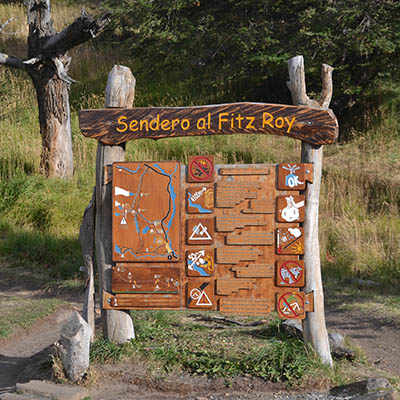 We descend into the ravine, fossil-rich and polished to a master carpenter’s finish by centuries of wind and ice. Striated stone walls flash deep red, copper and purple hues. Stepping over the uneven terrain magnifies the grating sound of dislodged pebbles in the cavernous gulch. Juan stops and to show us swirling vestiges embedded in the rock, the only evidence of animal life—until a bee stings me. “There are no bees here,” he says. I show him the furry insect clinging to my pant leg, its stinger piercing my skin. He simply shrugs his shoulders and the five of us push forward. By mid-afternoon I jokingly beg for a helicopter rescue. “Not possible,” said Juan. “Push forward or sleep out in the desert.” Knowing that the only way back to El Calafate is on the daily boat trip, I am concerned about my snail’s pace as I shuffle along. Syd tries pulling me. He jokes and that only makes me moody. My new friends lend me their walking sticks. We are the last to get on board. What was I thinking—the boat actually can’t leave without us. As we head back to our starting point, I slump on one of the seats exhausted and realize that I want more. I regret not having trained harder before arriving.
We descend into the ravine, fossil-rich and polished to a master carpenter’s finish by centuries of wind and ice. Striated stone walls flash deep red, copper and purple hues. Stepping over the uneven terrain magnifies the grating sound of dislodged pebbles in the cavernous gulch. Juan stops and to show us swirling vestiges embedded in the rock, the only evidence of animal life—until a bee stings me. “There are no bees here,” he says. I show him the furry insect clinging to my pant leg, its stinger piercing my skin. He simply shrugs his shoulders and the five of us push forward. By mid-afternoon I jokingly beg for a helicopter rescue. “Not possible,” said Juan. “Push forward or sleep out in the desert.” Knowing that the only way back to El Calafate is on the daily boat trip, I am concerned about my snail’s pace as I shuffle along. Syd tries pulling me. He jokes and that only makes me moody. My new friends lend me their walking sticks. We are the last to get on board. What was I thinking—the boat actually can’t leave without us. As we head back to our starting point, I slump on one of the seats exhausted and realize that I want more. I regret not having trained harder before arriving.
A second glacier adventure takes us to Perito Moreno. This time, a 20-passenger boat with wood-slatted benches brings us to what looks like a mountain of whipped cream. Crampons are attached to our shoes for the mini-trek on the jagged spikes of frozen snow. A quick lesson on how to plant our feet down flat and lift them straight up – the needed technique to move forward along the unfamiliar surface – and we are on our way. Giovanni, our Italian glaciologist escort, leads us up and around the peaks, landing us at a makeshift bar. A shot of whisky chilled with fresh glacial ice, a sweet tasting dulce de leche, and we are content. There’s something unique about a landscape that screams outpost and hearty locals who are sophisticated, classy and elegant. We head to a log shelter for a picnic lunch. The afternoon’s entertainment is staring up at Perito Moreno’s 60-metre towering wall above the icy blue-green waters. It feels like being at a drive-in movie. This week’s film: ice calving.
“Giovanni, our Italian glaciologist escort, leads us up and around the peaks, landing us at a makeshift bar. A shot of whiskey chilled with fresh glacial ice, a sweet tasting dulce de leche, and we are content.”
Kaboom! A series of dynamite-like blasts pierces the silence. Nothing seems to move. Then we see it. Nature’s force belches out a block of white-blue ice from the solid dam that blocked the flow of water on the lake’s northern branch. For weeks there has been talk of an impending break, and we are there to witness the start. Water gushes through the opening like a spewing fire hydrant.
I think it is lucky we didn’t succumb to Giovanni’s dire warning about falling into a crevasse and ending up in China! We look forward to returning to the luxury and comfort of Christina’s place for a glass of chilled wine.
If you would like to book a trip to the bottom of the earth, contact me at 514 497-1960 or send me an email: info@eviactive.com.
(Article by Eva Stelzer, originally published in WestmoungMag.ca on June 18, 2015)
Images: Eva Stelzer
0

